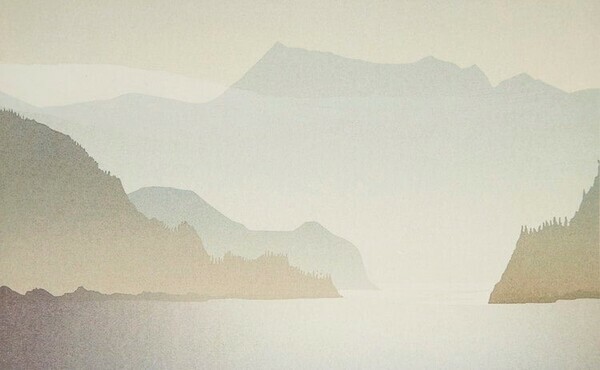| Home | | | About | | | PORTFOLIOS | | | Contact |
BLOG/WRITING
The Markgraf's
I discovered Peter and Traudle Markgraf around the time I left for art college and my family moved West; their own landscape silkscreens were to found in many galleries and I probably also saw them in magazines. A married couple, they studied art in Germany and arrived in Canada in the late 50's.
At that time the Sampson-Mathews Company had been producing oil based silkscreen prints on board as part of one of Canada's largest public art projects for several decades, and I remember the Sampson-Mathews prints displayed in my school, in the post office and other public buildings of my home town. The prints were part of a national culture building exercise, and promoted the work of some of Canada's most well known artists. For example, a print of Emily Carr's Sooke Church was outside of my grade six classroom. A. J. Casson was actually an art director at S-m's, and he enlisted many of his contemporaries including The Group Of Seven of which he was a member. The National Art Gallery also sold the prints, and they apparently found their way to embassies and military bases in post WW2 Europe. Although not what we might think of as numbered fine art prints, the prints were hand produced, considered to have value, although not enough to warrant special consideration and although not quite ephemera many were lost or thrown out. In recent years efforts have been made to market remaining stockpiles, and to buy and sell remaining prints, most particularly for a period by The Pegasis Gallery on Saltsprint Island. The Sampson-Mathews visual culture project really deserves it's own post, but for now more about Traudle and Peter.
Link here to Sampson-Mathews collection.
Back to the superb silkscreen artists Peter and Traudle Markgraf. Within a few years they essentially took over from where the Sampson/Mathews company left off, reproducing through silkscreen classics of Canadian painting for the National Gallery and a print distributor. At the time of writing the print company Artistia, out of Montreal still dealt in these 'early' screen prints which could still be purchased for 3-400 bucks. In the posted images below is the lush silkscreen reproduction of Varley's 'Vera', which apparently required over 80 colour passes with the squeegee to achieve it's effect. Looking at their work of this period, even reduced to a jpg on a screen, I can't help but admire the skill and technique required to work in the various styles of the various artists whose work they reproduced. In that same era, the 60's, a significant interest in silkscreen seems to have developed as a result of the popularity of post-modern, graphic, and often optical art; in the US this seems to have been spearheaded by the likes of Roy Algren, and in US online galleries you can find Markgraf prints along with Algren and others. If you like 'blends' you will love this stuff. I visited The Art Gallery Of Northumberland about 12 years ago and caught a superb exhibition of 'Markgraf prints'...during the 60's and early 70's it would appear the Markgrafs were involved with the production of of a folio of prints under the moniker 'Toronto 20' which included some of the big names in the Toronto area at the time; Harold Town and Joyce Weiland, Jack Bush, Robert Markle..., and Traudle's own work was included in this folio under her own name. Browsing online it appears the Markgraf's also produced silkscreen prints for the celebrated Anishinaabe painter Norval Morrisseau. The Markgrafs were obviously in great demand for their print skills.
Sometime in the late '70's print 'work' for the Markgraf's evaporated due to the typical fickleness associated with the visual arts. They found themselves underemployed and so packed up and headed out on the road travelling west and finally settling on the Sunshine Coast where where they developed their final print line, consisting of their own creations, which utilized their facility with blends to create ethereal aerial perspective in prints of Canadian, and particularly West Coast, landscapes. This is the era I first encountered their work; up and down the island to this day you can pick up Markgraf prints of this vintage for a few tens of dollars in fund raising 'empty the attic' auctions (see last 2 prints) at public art galleries. They are often in their original ubiquitous 70's and 80's silver steel frames and potentially light damaged from years of enjoyment. After about 10 years on the coast Traudle apparently developed health issues related to printmaking and they packed it in and headed back to the Montreal area to retire. One final note; I have a hunch the Markgraf's started printing for BC artists Toni Onley and Stewart Marshal (the kayaking artist whose documentary surfaces over and over on the Knowledge Network, or used to). Or at least the Markgraf's set them up; there seems a distinct similarity in the use of blends, translucent ink and and high key grayed down colour arrangements. I think Marshal's prints of the coast are stunning; better than his watercolours, vast, stunning and crystalline.
Below are some Markgraf prints showing the extraordinary versatility of their art and methods. Someone, somewhere, some time needs to make a serious effort to researching and documenting the contribution this emigre couple made to Canadian visual art.
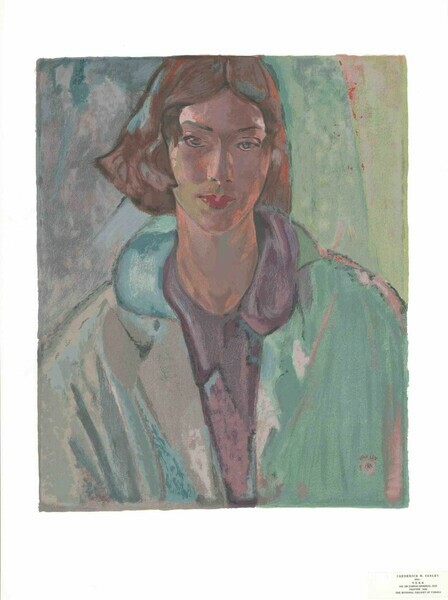
Above, the Markgraph's silkscreen impression of Varley's 'Vera'
Below, some impressions made of well known Canadian artists of the time and probably produced for sale at The National Gallery of Canada.


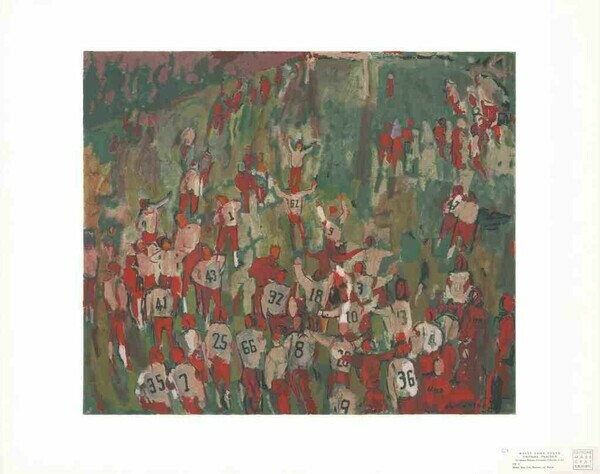

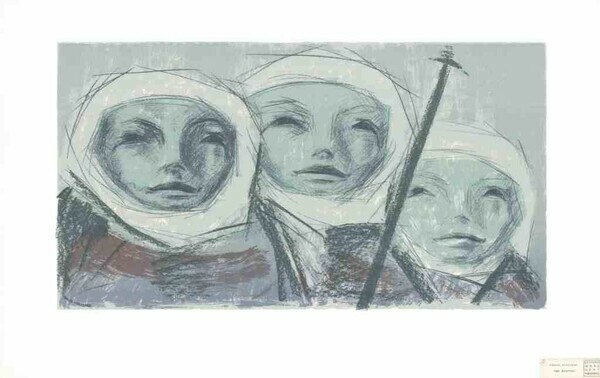
Below, Traudle Markgraf's contribution to a folio of screen prints by the Toronto 20.

Below, some of the Toronto 20's very 'Op' printmaking.
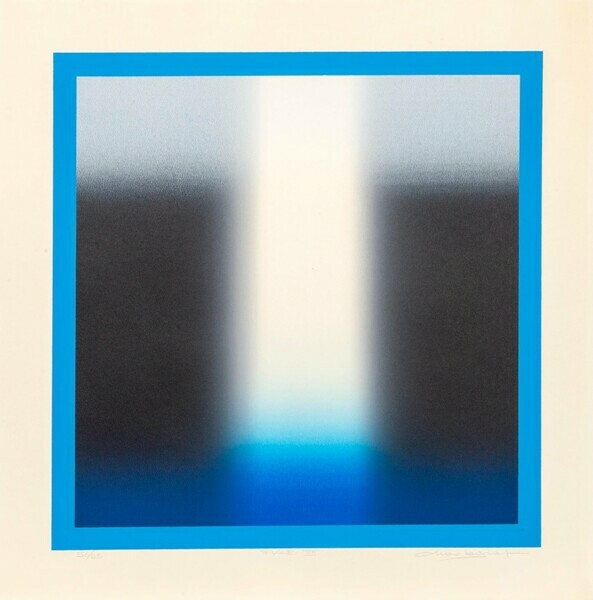
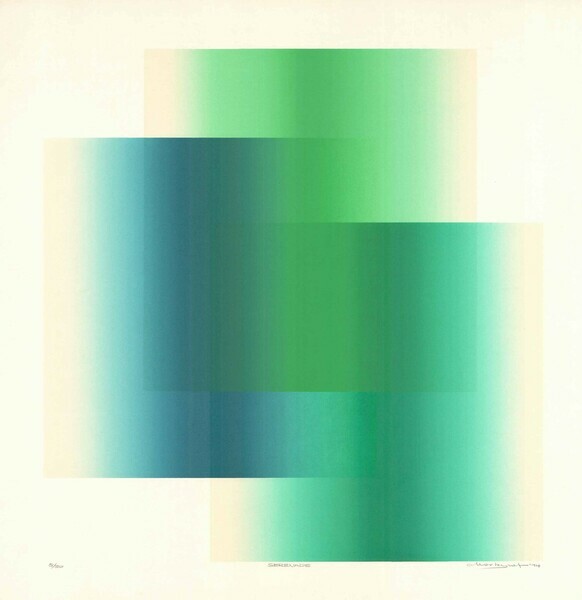
Finally, below, one of the Markgraf's own trademark landscape prints that were highly successful in the late 70's and early 80's. Google searches of the Markgafs will yield results for many more of this series of landscapes being sold at auction.
